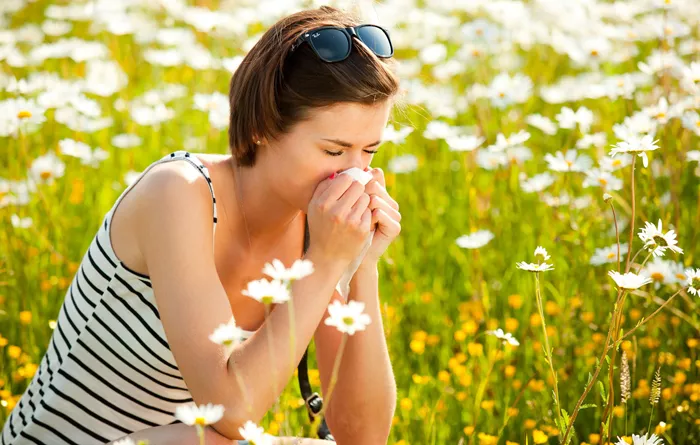As temperatures rise and flowers bloom, spring is a welcome season for many college students. However, for those with seasonal allergies, it also brings sneezing, itchy eyes, and congestion.
In the Northern Hemisphere, spring officially begins with the equinox, typically on March 20. Longer days and warmer weather trigger plant reproduction, releasing large amounts of pollen into the air. While essential for plant growth, this pollen is a major trigger for allergy sufferers.
Why Spring Triggers Allergies
Pollen plays a crucial role in plant reproduction. According to Smithsonian Gardens, “Pollination is an essential part of plant reproduction. Pollen from a flower’s anthers (the male part of the plant) rubs or drops onto a pollinator. The pollinator then takes this pollen to another flower, where the pollen sticks to the stigma (the female part). The fertilized flower later yields fruit and seeds.”
For people with allergies, this natural process can be miserable. Dr. Shaan Waqar, an allergist and immunologist at ENT and Allergy Associates, explains that seasonal allergies occur when the immune system overreacts to airborne allergens like pollen.
“Allergen exposure triggers an inflammatory response in the body, leading to the release of chemical mediators responsible for allergy symptoms like runny nose, sneezing, nasal congestion, postnasal drip, itchy nose, and itchy eyes,” Waqar said.
How Common Are Seasonal Allergies?
Allergies affect millions of people each year. According to the CDC, about 25.7% of adults and 18.9% of children experience seasonal allergies. In the spring, tree pollen is the most common airborne allergen, particularly in March and April.
The severity of symptoms varies from person to person. While some students may have mild discomfort, others struggle with severe reactions that interfere with daily activities.
Managing Seasonal Allergies
For those affected, Waqar recommends seeing an allergist for testing. Identifying specific allergens can help determine the best treatment plan.
“Testing is usually done for both outdoor and indoor allergens and can be very beneficial in developing an appropriate allergy treatment plan,” Waqar said. “Allergy testing can be performed via skin or blood testing.”
Many people rely on over-the-counter medications like Zyrtec, Allegra, or Claritin. However, for students with persistent symptoms, allergy shots (immunotherapy) may be a better long-term solution.
“Allergy shots help patients build tolerance by turning down the immune response to common allergens over time,” Waqar said.
Practical Tips to Reduce Exposure
Even those with mild allergies can take steps to minimize symptoms. Waqar suggests several simple precautions:
- Stay indoors when pollen levels are high, especially in the morning.
- Keep windows closed and use air conditioning instead.
- Wear sunglasses to shield your eyes from pollen.
- Shower after outdoor activities to wash off pollen.
- Avoid drying clothes or bedding outside.
With cherry blossoms blooming in Central Park and pollen levels rising, allergy sufferers should be prepared. Stock up on medication, consider an allergist visit, and take precautions to reduce exposure. Your nose and eyes will thank you.


